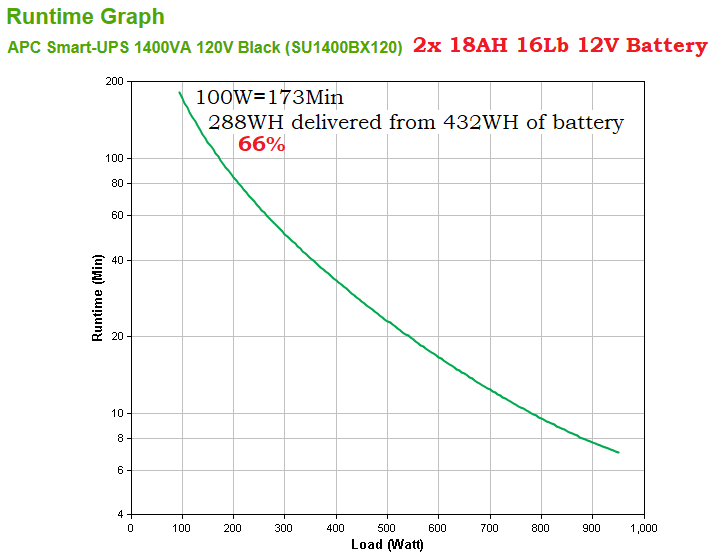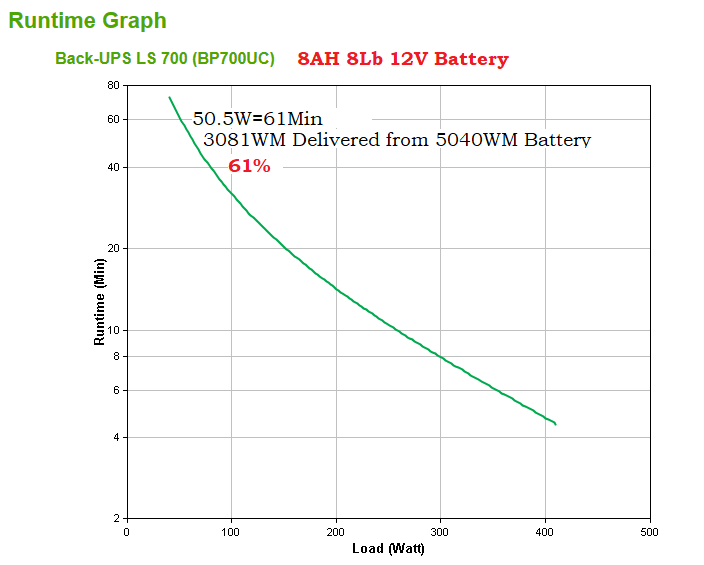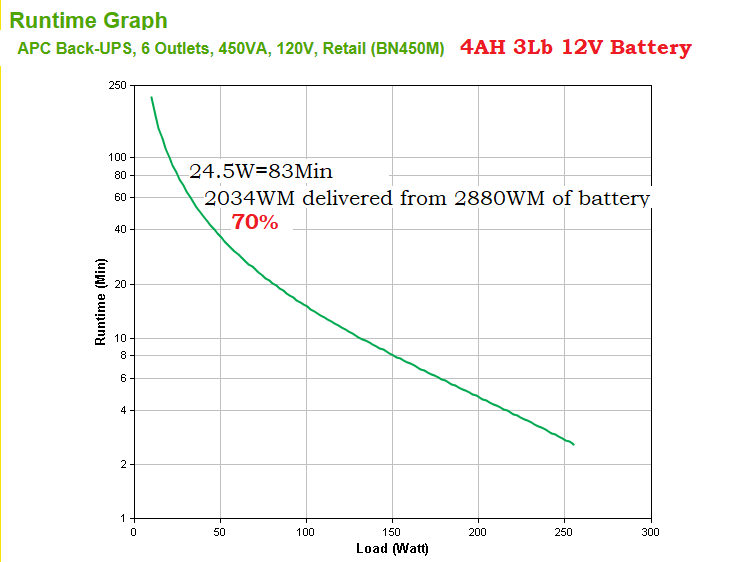I recently needed a UPS that could support about 30W for several hours and after looking at the specifications of consumer grade UPS units for a couple days I became very discouraged.
The scope of my research was mostly UPS units that were under 450VA.
Conversion Efficiency: I found out that most units (Even at a reasonable 60W load.) were less than 50% efficient. (Most were about 35%) The most logical component for the poor efficiency was the transformer and I was shocked how inefficient they were. (Way too small for the VA rating of most of them.)
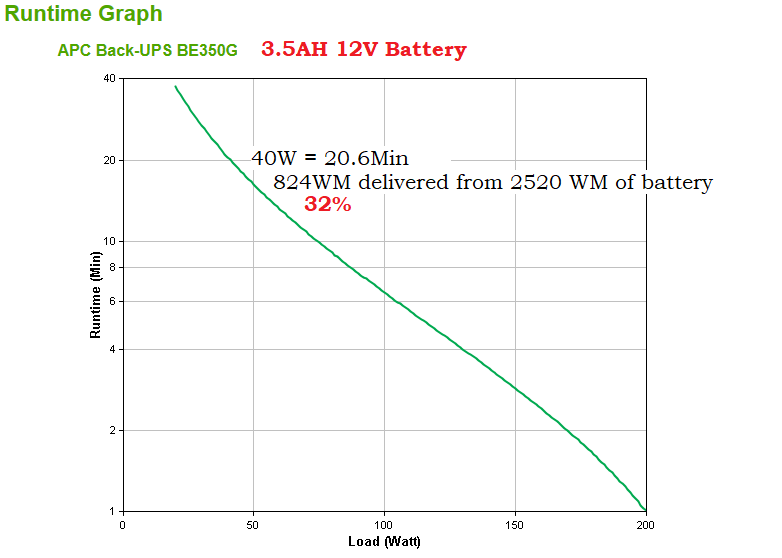
I found a video of someone attaching a large battery to one of these small units to extend the run time and the transformer melted through the case into the carpet floor and almost caught fire. I started recording the battery size and the run time for a 60W load from the runtime charts that were offered. The data was horrible, I just couldn’t believe that it passed UL. The good thing is that the larger VA rating of the UPS, the more efficient the transformer became. It did seem unreasonable to purchase a 700VA UPS to drive a 40W load!
Battery: The battery in these consumer grade units were unbelievably small, like 4AH. I get it, batteries are heavy and the price point is low for home units. A 350VA UPS would need roughly 25-35 Amps from this tiny 4AH battery contained inside. Looking at a typical battery specification, the efficiency of the battery is terrible at this high current draw.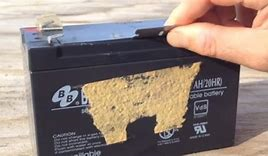
My rules of thumb after working with UPS units for 10 years is that any UPS that supports more than 100W should have a 24V battery. (It’s actually more efficient to light a 60W light bulb with a 12V battery for some reason.) I wrote all this up including charts and posted negative review on Amazon. Sure enough, APC came out with a much more efficient unit (~70%) about a year later. (No 60HZ Transformer) The complaints posted on Amazon suggest that the high frequency design is not as reliable. If you are wondering I have five of them and they are still in service a year later with no failures.
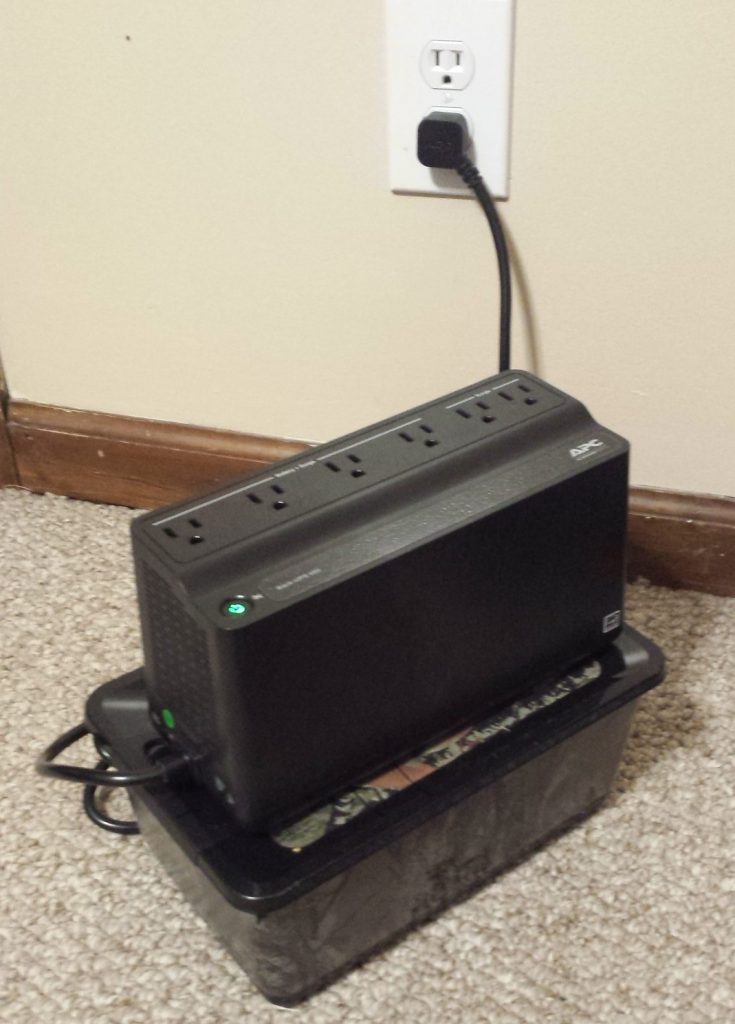
The UPS I ended up using was a $40 BN450M that has no transformer and generates very little heat. (So it can run a long time, but it doesn’t have any active cooling so I had to be careful.)

The first designs removed the board and put them in a much larger case.

The final design removed the battery and set the UPS onto a plastic tub with several much larger batteries underneath. I did end up putting a heat sink on the battery charger component since it takes several days to recharge the battery.
They keep the cameras up for about 2 hours with much larger external batteries mostly because APC included a timing “Feature” that shuts down the UPS at 160 minutes. I also found out that the batteries are floating at approximately 55VAC. (They need to be protected from accidental contact while the UPS is connected to commercial power.)
Boat Anchors: UPS units in the 1000-1500VA range are reasonably efficient at 100W, but they can weigh 60-80Lbs with the batteries. The 18AH batteries in most of them should be limited to 36Amps which yields ~800W with two in series (24V) and they produce less than half their rated capacity at that current. I wanted roughly 100 Watts for 2-1/2 hours. (250WH delivered to the load.) With a conversion efficiency of 70% and counting the conversion losses, I need roughly 370WH of battery power. Two 18AH batteries have roughly 432WH of energy and 370WH will leave some charge in the battery. Keep in mind though that two 18AH batteries exceed 30Lbs and the UPS is probably 20Lbs without the batteries.